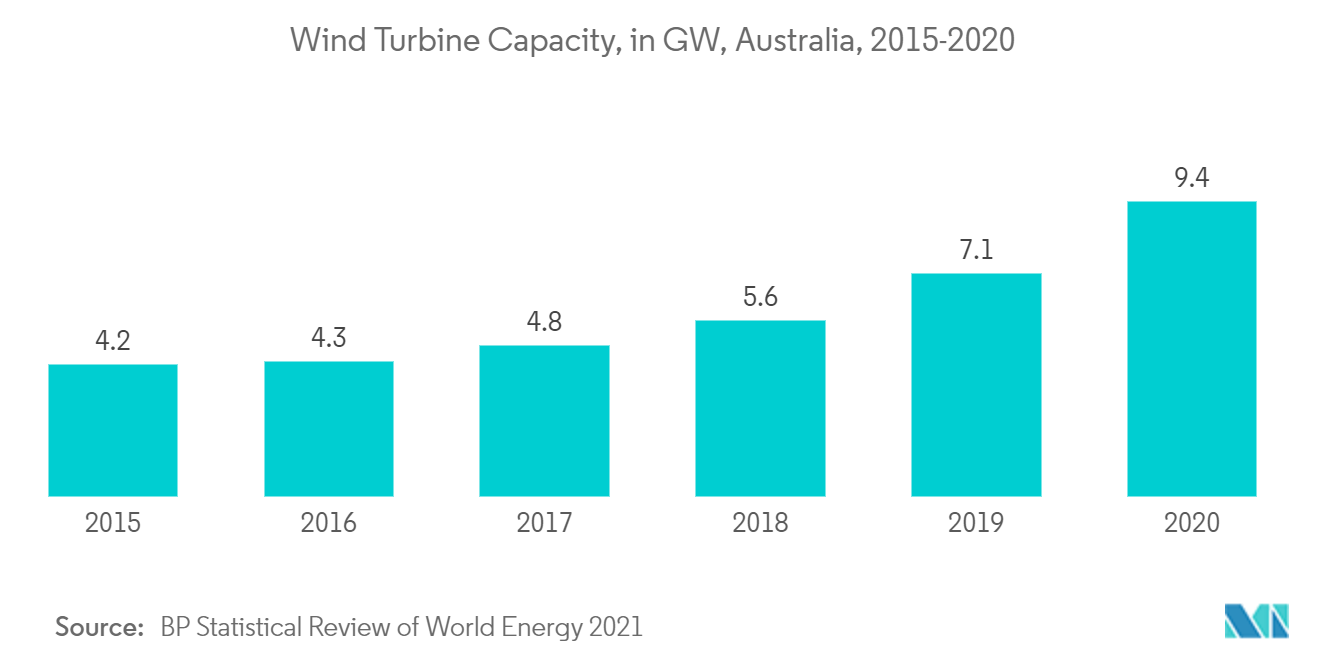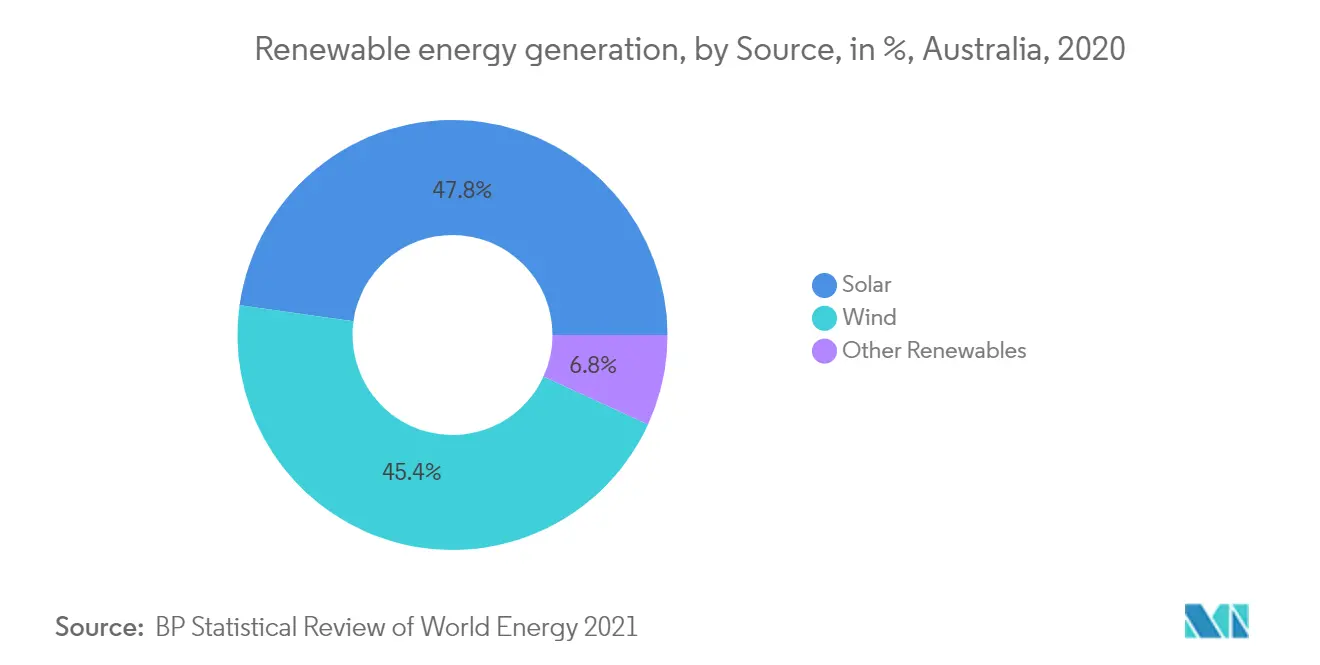Market Trends of Australia Wind Energy Industry
This section covers the major market trends shaping the Australia Wind Energy Market according to our research experts:
Onshore Segment to Dominate the Market
- Onshore wind energy is expected to dominate the market during the forecast period. Australia installed 1% of all new global onshore wind capacities in 2020.
- With a new annual installation of 1,097 MW (megawatts) in 2020, onshore wind energy installed capacity in the country reached 7,296 MW in 2020, up from 6,199 MW in 2019, driving the onshore wind energy market in the country.
- According to BP statistical review of world energy 2021, installed wind turbine capacity in Australia reached 9.5 GW in 2020, up from 4.2 GW in 2015. Also, the market is expected to grow significantly during the forecast period, as several wind power projects are planned to be commissioned in Australia. For Instance: Expected to be commissioned in 2027-2028, the Asian Renewable Energy Hub (AREH) and 11GW (gigawatts) intercontinental renewable energy project in east Pilbara, Western Australia, is likely to increase the share of onshore wind energy in the country. As of 2021, the project was fast-tracked through permitting as the federal government awarded it major project status.
- In January 2022, France's Neoen SA announced it started early construction works on the first phase of the Goyder Renewables Zone project that is expected to add 2.7 GW of capacity in South Australia. The over AUD 3 billion (USD 2.16 billion) project will comprise phased installation of up to 1,200 MW of wind, 600 MW of solar, and 900 MW/1,800 MWh of energy storage capacity. Also, the project's first stage will be a 412 MW wind farm called Goyder South Stage 1.
- Hence, such developments are likely to make onshore wind energy the dominant segment during the forecast period.

Government Policies and Increasing Investments are Expected to Drive the Market
- Favorable government policies are likely to drive the wind energy market in Australia. The government has launched various government policies and initiatives to support the growth of renewable energy and wind energy deployment in the country. For Instance: The Australian government launched the Technology Investment Roadmap as a strategy to help the country meet its emissions reduction targets and has committed to producing regular updates tracking progress against its technology goals.
- According to BP statistical review of world energy 2021, wind energy contributed 45.4% of total renewable energy generation in 2020, followed by solar and other renewables.
- In a bid to support renewable energy, the Australian government has launched Renewable Energy Target (RET). The RET provides and is assumed to be operating for another 15 years. The RET cross-subsidy for existing turbines from 2020 until 2030 will be near an AUD 9.3 billion grant for the wind industry.
- The cost of utility-scale wind energy in Australia is also expected to continue falling. New wind farms are expected to deliver electricity at around AUD 50-65/MWh in 2020 and below AUD 50/MWh in 2030. Thus, the reduction in the cost of utility-scale wind energy will also support the market growth in the coming years.
- Moreover, in 2021, Australian Energy Market Operator (AEMO) announced plans to pump in about AUD 2.5 billion of spending by 2024-25 to build wind, solar, battery and storage projects in the country, which will drive the growth of the market.
- Hence, government support and rising investments in renewable energy will drive the wind energy market growth during the forecast period.


